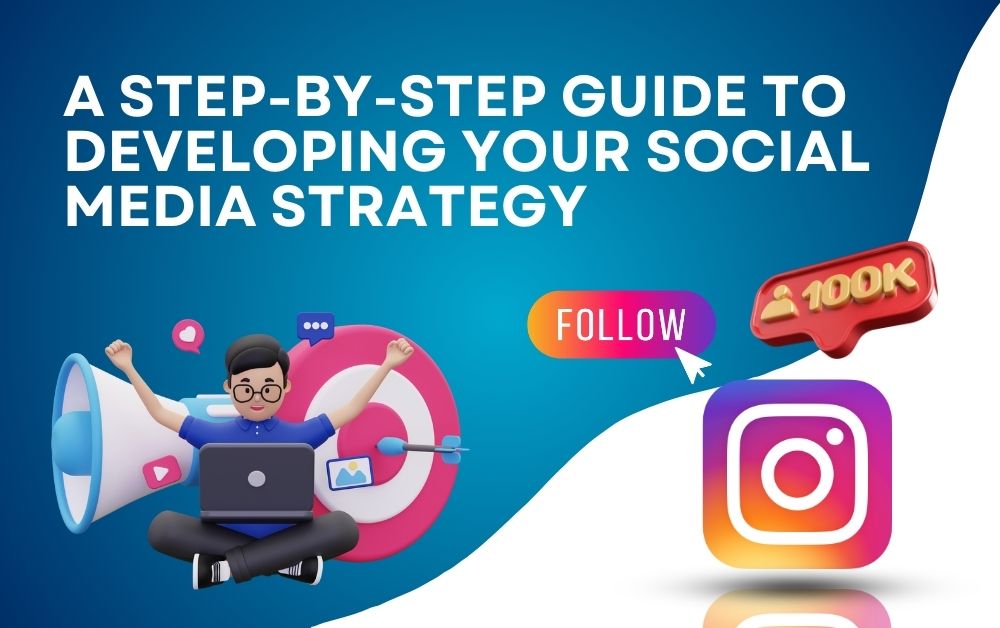Businesses of all sizes must have a strong social media presence in the current digital era. A strong social media strategy may help you engage with your audience, develop your brand, and increase sales, regardless of how big or little your business is. This comprehensive guide will help you create a successful social media plan that meets your company’s needs.
1. Define Your Goals
Before diving into social media, it’s crucial to understand what you want to achieve. Clear goals will guide your strategy and help you measure success. Common social media goals include:
- Increasing Brand Awareness: Make more people aware of your brand.
- Driving Website Traffic: Encourage visitors to your website.
- Generating Leads: Collect contact information from potential customers.
- Boosting Sales: Directly increase your product or service sales.
- Enhancing Customer Engagement: Build a community around your brand.
- Providing Customer Support: Use social media as a platform to assist customers.
Start by setting specific, measurable, achievable, relevant, and time-bound (SMART) goals. For example, “Increase Instagram followers by 20% in three months” is a SMART goal.
2. Understand Your Audience
Knowing your target audience is essential for creating content that resonates with them. Here’s how to get to know your audience better:
Create Buyer Personas
A buyer persona is a detailed description of your ideal customer. Consider the following aspects when creating personas:
- Demographics: Age, gender, location, income level.
- Psychographics: Interests, values, lifestyle, behavior.
- Challenges and Pain Points: Problems your audience is looking to solve.
- Preferred Social Platforms: Where does your audience spend their time online?
Conduct Audience Research
Use tools like Google Analytics, social media insights, and surveys to gather data about your audience. Pay attention to which types of content perform best and what times your audience is most active.
3. Choose the Right Social Media Platforms
Not all social media platforms are created equal, and each serves different purposes. Choosing the right platforms ensures you reach your target audience effectively. Here’s a brief overview of major platforms:
- Facebook: Great for building a community and sharing a variety of content types.
- Instagram: Ideal for visually-driven content like photos and videos.
- Twitter: Perfect for real-time updates and engaging in conversations.
- LinkedIn: Best for B2B marketing and professional networking.
- Pinterest: Excellent for sharing ideas and visual inspiration, especially in niches like fashion, home decor, and DIY.
- TikTok: Suited for short, creative video content targeting younger audiences.
Select platforms based on where your audience is most active and where your content type performs best.
Note:-
Ready to elevate your social media presence? Partner with Prontosys, Dubai’s best social media marketing agency, and watch your business thrive. Contact us today to get started!
4. Develop Your Content Strategy
Content is the heart of your social media strategy. A well-planned content strategy ensures you consistently deliver valuable and engaging content to your audience.
Content Types
Diversify your content to keep your audience interested. Common content types include:
- Blog Posts: Share informative articles related to your industry.
- Images and Graphics: Use high-quality visuals to capture attention.
- Videos: Create engaging videos to demonstrate products or share stories.
- Infographics: Present data and information in an easy-to-understand format.
- Stories and Live Streams: Offer real-time engagement and behind-the-scenes looks.
Content Calendar
Plan your content in advance with a content calendar. This helps maintain consistency and ensures you cover all relevant topics. Include:
- Posting Schedule: Decide how often to post on each platform.
- Content Themes: Assign themes or topics to different days or weeks.
- Key Dates: Incorporate holidays, product launches, and other important events.
Engagement Strategy
Engage with your audience by responding to comments, asking questions, and encouraging user-generated content. Building a two-way conversation strengthens your relationship with followers.
5. Monitor, Analyze, and Adjust
A successful social media strategy requires ongoing monitoring and adjustments based on performance data.
Track Key Metrics
Measure the effectiveness of your strategy by tracking metrics aligned with your goals. Common metrics include:
- Reach and Impressions: How many people see your content.
- Engagement Rate: Likes, comments, shares, and other interactions.
- Click-Through Rate (CTR): Percentage of people who click on links in your posts.
- Conversion Rate: How many interactions lead to desired actions, like sales or sign-ups.
- Follower Growth: Increase in the number of followers over time.
Use Analytics Tools
Leverage analytics tools provided by social media platforms or third-party tools like Google Analytics, Hootsuite, or Sprout Social to gather and interpret data.
Adjust Your Strategy
Based on your analysis, tweak your strategy to improve performance. This could involve:
- Changing Posting Times: If engagement is low at certain times, try posting when your audience is more active.
- Content Refinement: Focus more on content types that perform well and reconsider those that don’t.
- Experimenting with New Ideas: Test new formats, topics, or platforms to see what resonates best.
A/B Testing
Conduct A/B tests by comparing different versions of your content to see which performs better. This helps you understand what appeals most to your audience.
Conclusion
Developing a robust social media strategy takes time and effort, but the rewards are well worth it. By defining clear goals, understanding your audience, choosing the right platforms, creating a solid content strategy, and continuously monitoring your performance, you can build a strong social media presence that drives business success.
Remember, social media is always evolving. Stay updated with the latest trends and be willing to adapt your strategy to meet the changing needs of your audience. With persistence and the right approach, your social media efforts will help you connect, engage, and grow your business effectively.















